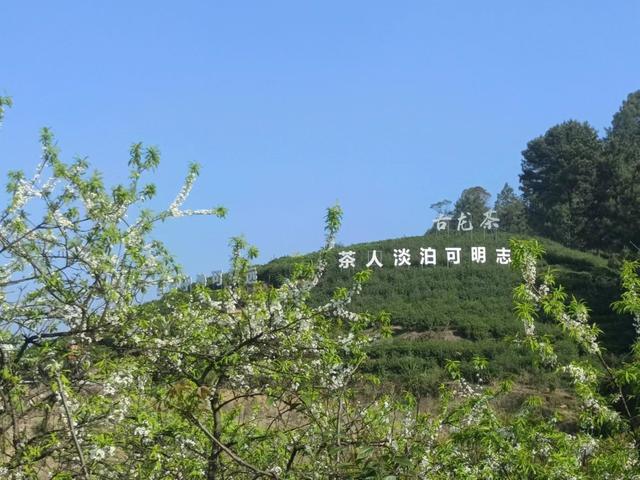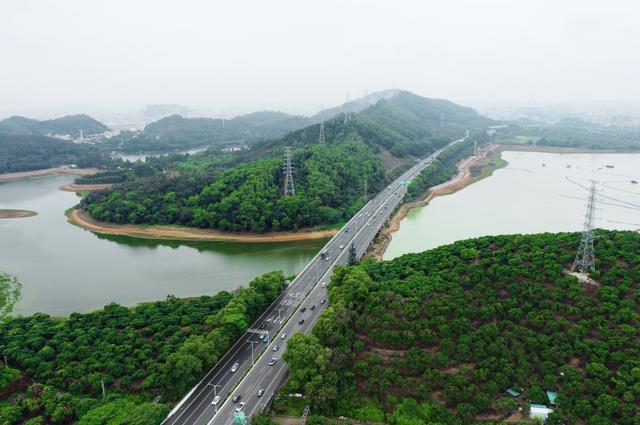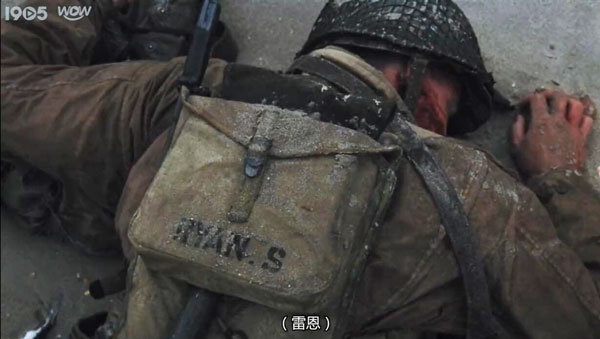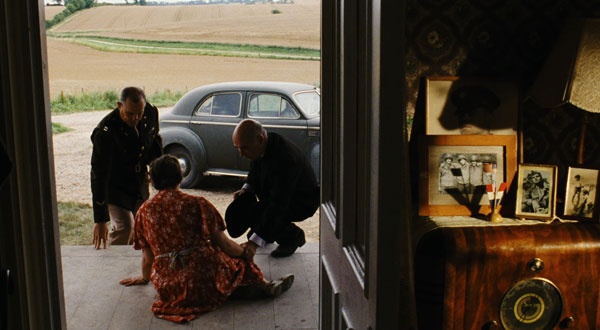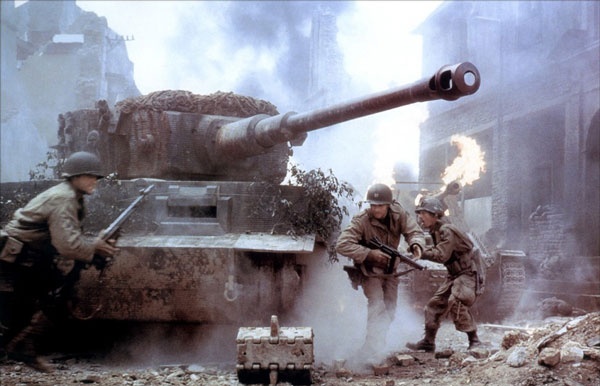Night Economy in Beijing: Counter-attack of First-tier Cities
China News Weekly reporter/Yang Zhijie
September 16, 2019 China Newsweek, No.916.
23:20, it’s late at night. The city quieted down in the dark, like a tired lion, and temporarily converged sharply.
The night bus No.27 starts from Wuyi Garden Station on the East Sixth Ring Road in Beijing on time, all the way to the west, and the destination is Guomao on the East Third Ring Road. A group of special passengers got on the bus. They all hung work tags and each carried a folding scooter. Many people are frequent visitors and know each other well. This is a famous "special drive line" in Beijing, and the night bus to the city center at night is the beginning of their hope every day.
There are 36 night shift lines in Beijing, which start at 23: 20 and close at 4:50 in the morning, with an average daily departure of 792 times, carrying more than 10,000 urban night returnees every day. According to the China Smart Travel Big Data Report released by Didi, Beijing is one of the cities with the worst overtime in China, and the proportion of white-collar workers leaving work before 19: 00 is less than 40%. At the headquarters of the Internet company in Houchang Village, the lights are always on until after midnight, and the boss who lives with the rhythm of 996 and the "overtime dog" keep Beijing awake at night.
Beijing, which never sleeps in the middle of the night, cannot be directly equated with the prosperous night economy. Day and night are the AB side of the city. The A side of Beijing is an orderly international metropolis in high-speed operation, and it is a place of dreams and ambitions supported by more than 21 million people. Beijing, on the other hand, has always been ridiculed by the southern urban agglomeration as "no nightlife", because the night economy does not mean overtime at night, and it is not a simple continuation of the daytime economy.
The lack of presence in the night economy does not match Beijing’s economic strength. The data shows that in 2018, Beijing’s per capita GDP reached 21,200 US dollars, which is at the level of developed countries, ranking first in the country. Internationally, the prosperity of "night economy" is an important symbol of a city’s economic openness and activity. Therefore, at the two sessions in Beijing this year, the prosperous night economy was written into the government work report. On July 12th, Beijing Municipal Bureau of Commerce launched "13 Articles on Night Economy".
Beijing is trying to make up the lesson of "night economy".
There is no nightlife in Beijing?
Jia Jingnan lives in Haidian District, Beijing, where there are many colleges and universities, a strong educational atmosphere and many Internet companies, most of which are "code farmers" living the "996" rhythm.
"We Haidian people don’t pay attention to nightlife." At the age of 29, there is no business atmosphere in Haidian District. The nearest to his home is Wukesong, and now the Huaxi LIVE commercial district has been built, which is the most prominent night economic hot spot in western Beijing. But three years ago, there were only Wukesong Stadium and outdoor basketball court, and it was not popular at night.
Jia Jingnan’s main nightlife is in Chaoyang District and Dongcheng District. "Haidian boy’s nightlife is that he doesn’t have a girlfriend to play in Wukesong, but he has a girlfriend to go shopping in the east." In his impression, Nancheng has no sense of existence. He will drive to niujie with his family and friends at night to eat hotpot, but he will go home early after eating. In his view, Nancheng belongs to old Beijing, and the residents are older as a whole. There are no large office buildings and enterprises around, and it is "deserted after 10 pm".
For most Beijingers, nightlife is dispensable. Southerners in the circle of friends are always "poisoning in the middle of the night": Guangzhou people go out at 12 o’clock in the evening to meet for supper, Changsha people are partying at Jiefang West Road at 2 o’clock in the middle of the night, and Chengdu people are still waiting in line at the hot pot restaurant at 3 o’clock in the morning.
By southern standards, there is no nightlife in Beijing. Many big data can support this impression. According to the hungry 2017 take-away supper order quantity ranking, Beijing supper order quantity only ranks sixth. According to Didi Chuxing’s 2017 Urban Traffic Travel Report, among the top ten business districts with the richest nightlife index in China, Beijing’s Houhai and Sanlitun are only ranked 8 th and 9 th.
In fact, there is no shortage of landmark night economic areas in Beijing. Workers’ sports, Sanlitun, Houhai and Guijie have propped up half of Beijing’s night economy. Sanlitun business circle is the weather vane of nightlife in Beijing at present. In this small area of 2.2 square kilometers of East Third Ring Road, there are more than 57,000 permanent residents, a considerable number of whom are foreigners.
Sanlitun has become an economic highland at night, which is closely related to the strong international atmosphere around it. Near Sanlitun, there are 93 embassies in China, 15 United Nations agencies in China, and China headquarters of many multinational companies. In 1995, the first bar opened in Sanlitun, originally serving foreigners around, but imported products quickly took root and became the most fashionable lifestyle of young people in Beijing at night. At the peak, more than 200 bars gathered around Sanlitun.
As the location of Beijing CBD, Chaoyang District, where Sanlitun is located, is also the most active area in Beijing at night. The staff of Chaoyang District Bureau of Commerce told China Newsweek that the night economy in Chaoyang District shows a multi-point flowering distribution, and Sanlitun, Hujialou, Chaoyangmen, Jianguomen, Shuangjing and Jinsong are the most active areas in the city. The data shows that in 2018, Chaoyang District accounted for 33.1% of online consumption at night in Beijing. Beijing Unicom’s mobile phone signaling data (telecom terminology) shows that after 22 pm, the active population in Chaoyang District accounts for 1/5 of the city, which is more active than other areas in Beijing.
The nightlife of "Chaoyang people" is rich, but it can’t cover up the overall lack of night economy in Beijing. There are some bright spots locally, but the whole is not active, which is also a common problem in northern cities.
Night-to-store consumption shows an obvious trend of "strong in the south and weak in the north", which is the conclusion drawn in the "Night Economy" Report released by Alibaba in July. Among the 10 cities with the most active night consumption in China, the southern cities account for 9 seats, and the northern cities are only listed in Beijing. In the "nightlife index" published by the New First-tier Cities Research Institute, eight of the top 20 nightlife indexes are cities south of the Yangtze River, Beijing ranks fourth, and the top three are Shenzhen, Shanghai and Guangzhou.
Zhang Bairui, deputy director of the Institute of Urban Studies, Beijing Academy of Social Sciences, once noticed a detail. In many southern cities, no matter the size of the restaurant store or what time it is at night, few waiters take the initiative to remind them to close, and this scene is very common in Beijing. "Affected by natural conditions, the night economy in the south is more developed than that in the north, and the service consciousness is stronger." He told China Newsweek.
Climate is not the only reason that restricts Beijing’s economy at night. The inconvenient transportation at night is also an important factor. In the urban nightlife index released by the New First-tier Cities Research Institute, almost all the top ten cities in the night bus coverage are southern cities, especially Guangdong and Hainan. Beijing ranks out of the top 20, and its night bus coverage rate is only 17.8%. For many white-collar workers who have dinner at night, they must pinch the time like Cinderella, and make the happiness of the party come to an abrupt end before the end of the last bus.
But this year, this situation has changed a lot. In order to stimulate the night economy, the Beijing Municipal Transportation Commission announced that the operation hours of Metro Lines 1 and 2 will be extended from May to October every year on Fridays and Saturdays, so as to provide convenience for consumers to go to the night consumption places in Beijing along Chang ‘an Avenue and around the Second Ring Road. At the same time, many other subway lines also extended their business hours over the weekend.
"In fact, Beijing has a large enough demand for night consumption." Zhang Bairui believes that for a world-class city like Beijing, the development of night economy has the effect of "getting more at once": it is not only an important way to promote consumption upgrading, but also a necessary condition for developing high-quality life and an important symbol of Beijing’s urban vitality. "In some international metropolises, the prosperity of night economy also represents the vitality of the city to a certain extent."
Make up "Midnight Food Store"
Guijie is a microcosm of Beijing’s night economy.
Guijie, where Hu Da Restaurant is located, is the most landmark midnight snack street in Beijing. On both sides of the street with a total length of more than 1400 meters, there are more than 250 merchants, of which more than 90 are crayfish shops. Hu Da Restaurant has four branches in this street, which can sell 8,000 Jin of crayfish every day. Fang Xuhu, assistant general manager of Hu Da Restaurant, told China Newsweek that at the gate of the main store, people began to line up at 11 am every day, and the waiting time continued until 2 am. There are also some customers who will eat until six or seven in the morning, wake up completely from the drunkenness of the night before, get up and walk into a new day.
Although midnight snack in Guijie Street has been popular for more than 20 years, Beijing, like other parts of the country, is planning to build more "Midnight Food Store" on how to better take care of people’s restless stomachs in the middle of the night.
In the context of the slowdown of national economic growth, various places have begun to tap the potential of night economy. How to eat well is the most important thing in all the ways to promote the night economy, because catering is one of the most important categories in the night economy. On July 12th, Beijing Municipal Bureau of Commerce launched "13 items of night economy", in which it specifically mentioned that 10 food and beverage blocks with Midnight Food Store characteristics were launched. The Beijing Municipal Bureau of Commerce also provided real money to provide financial support to Midnight Food Store.
Yang Wenxin took over as the general manager of Beijing Zhongjun World City (hereinafter referred to as "World City") last year. World City is a commercial complex in Chaoyang CBD area. At that time, a big problem faced by Yang Wenxin was that the World City was located in a narrow block on the north side of World Trade Center day order, facing the popular Qiaofufang Grassland in the northwest. The project was very small, and it has been running for 10 years, and it has been tepid and lacked a sense of existence in the eyes of consumers.
He led the team to conduct market research, asked about the needs of consumers and businesses, and smelled the potential of night consumption in Beijing. The heat map provided by Didi to the World City shows that the area around the World City has the largest number of orders among the areas where the special orange car is played at night in Beijing. Yang Wenxin’s analysis of China Newsweek shows that the main customer base of World City is middle and high-end users, who have consumption power and demand, so he decided to play differentiated competition in business format and time.
Yang Wenxin’s team began to transform the world city block, transforming the former retail and lifestyle boutiques into catering shops, and introducing some catering brands and online celebrity stores. In his view, the consumption in the big environment is relatively bad, and everyone can’t make higher-level consumption. The World City pays more attention to doing some "lipstick effect" industries, such as eating a meal and watching a movie. In addition to introducing stores with their own traffic, World City started late-night operation in July, and many stores have posted the words "Midnight Food Store", and the business hours have been extended to 2 am, of which Haidilao is open 24 hours a day.
Jassamyn Liu, the manager of a yogurt house in the World City, remembers that after zero, the number of consumers decreased obviously. But from time to time, tipsy customers from the opposite bar turn in and order a cup of yogurt to relieve the hangover. What impressed her the most was that the store closed immediately, and a foreigner couldn’t find other restaurants nearby. He sat in the yogurt house for more than 3 o’clock in the morning and buried himself in three bowls of yogurt. In Jassamyn Liu’s view, even in the middle of the night, people still have a demand for food and beverage.
In just one month, "Midnight Food Store" gave a beautiful report card. According to the data provided by the Chaoyang District Bureau of Commerce, World City is the only high-end dining block in the CBD of Chaoyang District that is open late at night. From 22: 00 pm in June to 2: 00 am the next day, the daily average passenger flow of stores in World City increased by more than 40 times, reaching nearly 10,000 person-times.
However, the extension of business hours will inevitably bring about an increase in costs. Yang Wenxin introduced that the opening of the World City project in Midnight Food Store will increase the cost by about 1.2 million yuan per month. In the view of Fang Xuhu, assistant general manager of Hu Da Restaurant, the head office is open 24 hours a day, and the staff cost will definitely increase, but they are more concerned about creating an atmosphere of night economy and gathering popularity for Guijie.
24-hour business also poses more challenges to the operation and management of the store. Every night, there are more than 50 waiters in the front hall of Hu Da Head Office shuttling between the private rooms and the lobby, and more than 50 chefs in the back kitchen stir-fry all the time. Cao Wenli, the manager of the head office, is concentrating on checking every process of the hotel. After two o’clock in the morning, the long queue ended, but the hall was still full of customers. People’s rhythm slowed down, but the manager Cao didn’t dare to relax.
During this time, people are most likely to drink and make trouble. "Now we are drinking late at night, and the cups touch together, all of which are the sound of broken dreams." The poet Kitajima wrote in A Visitor from Poland. And waiters in Hu Da must always be alert, most afraid of hearing the sound of broken cups.
Night economy night market
Apart from catering, bars and nightclubs, the traditional places of nightlife, are not encouraged.
In the researchers’ view, this time, the government tried to create an "upgraded version" of the night economy in the past, and some people said it was version 2.0 of the night economy, which was different from version 1.0 spontaneously formed by the market in the past. The 1.0 version of the night economy is dominated by night markets and bars, but it has gradually shrunk in recent years under the influence of various factors.
The night market has always been a missing link in Beijing’s night economy. The civilian open-air night market has been banned, and even the Wangfujing Donghuamen snack street, which foreign tourists love to punch cards, has been shut down and transformed. The open-air barbecue has not been allowed for many years, and there are fewer and fewer civilian nightlife methods. On the other hand, high consumption at night has become a roadblock for ordinary people’s nightlife. Beijing has never lacked the legend of profligacy at night. Some WeChat official account once broke the news: In 2016, Wang Sicong threw 2.5 million yuan at KTV one night. Some people lamented: "I drank a house in Beijing’s East Fifth Ring Road."
Zhang Bairui, deputy director of the Institute of Urban Studies of the Beijing Academy of Social Sciences, told China Newsweek that in the past, night economy was a minority research field in the mainstream domestic economics and public policy fields. Some policy makers do not have a comprehensive understanding of the night economy, and often associate the night economy with specific consumption symbols such as bars, nightclubs and food stalls, and even have some negative associations.
But to some extent, the bar is an important indicator to measure the level of urban nightlife. "I have a story. Do you have any wine?" For many urban young people, "having a drink" is the sign of the beginning of urban nightlife.
The format of bars and nightclubs has also experienced ups and downs in Beijing, among which Sanlitun is the representative. The first bar in Sanlitun was officially opened in 1995, and "Sanlitun North Street", a street adjacent to the embassy district, became popular rapidly in just a few years. In 2002, a debate broke out on whether Sanlitun should be demolished, and the resulting "Sanlitun Bar Street Reconstruction Project" planned to "merge" the bar street with the original site of Sanlitun clothing market that had been demolished. However, this planned "sense of order" does not have much vitality. The original bar consumers soon gathered in another alley, and the "dirty street" quietly rose around 2005. But soon, Sanlitun North and South Street began to be rectified again. This time, it was positioned as a "fashion and cultural block". Many bars that had just obtained business licenses were forced to close because they did not meet the development orientation. Until 2017, another round of large-scale rectification made the "dirty street" completely withdraw from the historical stage.
However, with the recovery of night economy in various places this year, the night economy has also gone through the process of re-understanding. The latest research report of PwC Eliot’s "Night Economy Activates City" FUN Life "shows that: from an international perspective, night economy is very diverse. Localization and internationalization, tradition and trend, grounding gas and high night economy often have their own markets. For example, as the most dynamic economic and cultural center in the world and a "city that never sleeps" famous for its 24-hour subway, new york’s nightlife starts from culture. Whether it is the traditional center of Times Square and Broadway, or the East Village and Brooklyn where young people gather, the nightlife is rich and full of vitality.
The domestic night economy has also begun to show a diversified trend. 24-hour bookstores, museums, art galleries and Livehouse performance markets have begun to become the main positions for late-night consumption in Beijing.
At 9 o’clock in the evening, Zhao Qi crossed the busy Taikooli South District and flicker into Sanlian Taofen Bookstore, which is open 24 hours a day. Compared with the busy neighborhood outside, the bookstore is a bit deserted. Zhao Qi lives nearby. She just quarreled with her family in the evening. She has nowhere to go but to run into the bookstore. The 24-hour bookstore can always provide psychological comfort for some urban night returnees when necessary.
Chaoyang District Bureau of Commerce told China Newsweek that Sanlian Bookstore operates at night and is still losing money at present, but it is more for the sake of public service. In order to develop the night economy, Chaoyang District has built 150 24-hour self-service library, 4 city bookstores, and 2 street-level libraries to extend the consumption time.
In response to the development of Beijing’s night economy, the National Museum was extended to close at 9 pm every Sunday in summer from July 28th. Guobo’s attempt played a leading role. beijing museum of natural history, China Garden Museum and Beijing Guo Shoujing Memorial Hall all joined the "Museum Night" team.
In Zhang Bairui’s view, compared with other cities, the biggest advantage of Beijing’s night economy lies in culture and technology. The head of the Consumption Promotion Department of Beijing Municipal Bureau of Commerce told China Newsweek that no city in China has more cultural resources than Beijing. There are more than 160 museums, more than 50 art galleries, a large number of public libraries, private libraries, zoos and various historical and cultural attractions in Beijing, all of which are the blue ocean of "night economy" to be developed.
However, in Zhang Bairui’s view, Beijing still has great potential to enhance the value of culture and technology in the night economy. The index report of city night tour released by the New First-tier City Research Institute also points out: On the whole, the night economic development of cities is still in the primary stage, and there are few night activities and night tour places with different attributes, so there is still a lot of room for development.
The Dilemma of "Elephant Turning"
As the special status of the capital, Beijing has both special endowments and many constraints in developing the night economy.
Fang Xuhu, assistant general manager of Hu Da Restaurant, told China Newsweek that in July this year, the Guijie Chamber of Commerce, composed of Guijie merchants, and 36 merchants, planned to hold a "No Night Festival" during the summer peak hours to extend the business hours and attract more people to Guijie. In order to hold this event, the Chamber of Commerce needs to go to at least 10 departments including Dongcheng District Transportation Commission, Food and Drug Administration, and Emergency Office for filing and approval in advance.
But this plan was initially opposed by many departments. "Guijie Chamber of Commerce has no choice but to find feedback from Dongcheng District Bureau of Commerce. The Bureau of Commerce finally invited the district head to come forward and convened the heads of various departments to hold a coordination meeting to develop the night economy." Fang Xuhu recalled that after this coordination meeting, Guijie Chamber of Commerce clearly felt the reversal of attitudes of various departments, stopped unanimously opposing, and began to emphasize precautions and emergency plans, and then said, "We will cooperate with you, and you should regulate yourself."
Being in the political center, Beijing’s demand for order and stability is overwhelming. For a long time in the past, Beijing has invested a lot of energy in rectifying the appearance of the city. Open-air barbecues, nightclubs, bars, food stalls and other projects that are prone to potential safety hazards and frequently receive complaints about traffic, environmental protection and noise have become key management targets.
For several years in a row, Guijie Street has been the focus of rectification. At the end of March 2014, the urban management, public security, traffic control and other departments of Dongcheng District and Beixinqiao Sub-district Office jointly took action to dismantle the lanterns and light box advertisements that had been hung in more than 40 stores on Guijie Street for many years. In 2016, Guijie was selected into the list of "sparse function and population control" in Dongcheng District, Beijing, and then it was upgraded: the sidewalks were widened and greenery was added. No parking was allowed on the roadside, but it was concentrated in nearly 200 parking spaces around Guijie. Even, in order to improve hygiene, the melon seeds knocked by the guests were replaced with corn flakes.
Guijie Street has changed from the original "dirty mess" to a model dining street, and the transformation has been satisfied by the surrounding residents, but the merchants can’t hide their disappointment. Fang Xuhu remembers that in the winter of 2017, many shops in Guijie Street also suffered from the cold winter of passenger flow. Guests can’t park on the street, and the queue atmosphere of fireworks is lost. The business in Hu Da has dropped by nearly 50%. "Guijie Street is clean and tidy now, but the business atmosphere is not as strong as before." Some shopkeepers he knew could not bear to lose money, and they moved away after the contract expired, feeling that "Guijie is no longer the Guijie of the past".
The prosperous scene spontaneously formed in the past has been pulled back and forth in the repeated policies and criticized by many people as the root cause of the lack of vitality in the night economy. But for the management, "laissez-faire" is unrealistic and unacceptable. How to coordinate the relationship between tourists and residents, residents and businesses, businesses and the government tests the level of urban night governance.
A staff member of Chaoyang District Bureau of Commerce visited Shanghai and Chengdu, and he obviously felt that the "outward swing project" in these places was relatively open in management. Shanghai’s "outdoor display project" of night economy already has a set of mechanisms. The local commercial bureau can coordinate the streets and law enforcement departments and have a standardized access mechanism for night display, while Beijing is not so easy.
In the new round of night economic boom, how to explore more inclusive supervision methods has become a new topic that all localities must face. Chaoyang District Bureau of Commerce told China Newsweek that as one of the landmarks of "Night Capital", Sanlitun business district is conducting a pilot project of outward display, which is different from the disorderly state in the past, and has stricter norms on environmental protection and safety.
The development of "night economy" sometimes means that some governance methods in the past must be re-examined or even "adjusted back". The Bureau of Commerce of a certain district in Beijing told China Newsweek that this year, a coordination meeting has been held with various departments to explain the night economic policy to different departments, but many departments did not understand it at first. "Some street offices complain that in the past few years, it took so much effort to solve the small business hawkers and now let them out." After several coordination meetings, each department slowly understood the policy and appropriately liberalized the scale.
The assessment standards for some departments also need to be changed. The staff of the above-mentioned Bureau of Commerce told China Newsweek that Beijing has implemented "12345" as soon as complaints are received, and the government will regularly inform the streets and departments with lower rankings based on the response rate, settlement rate and satisfaction rate. However, the development of night economy may increase the complaint rate. Under such standards, the assessed units are under great pressure. "It is possible to be strict economically at night in order to fulfill their duties. Therefore, to develop the night economy, it is necessary to gradually improve the supporting contents such as assessment standards. "
"The development of night economy should be market-oriented, and the government plays an encouraging and guiding role." Beijing Municipal Bureau of Commerce told China Newsweek frankly.
Some scholars also suggest that the government should not only cultivate, but also get rid of excessive regulation that is not conducive to night consumption.
(At the request of the interviewee, Jia Jingnan and Zhao Qi are pseudonyms)



